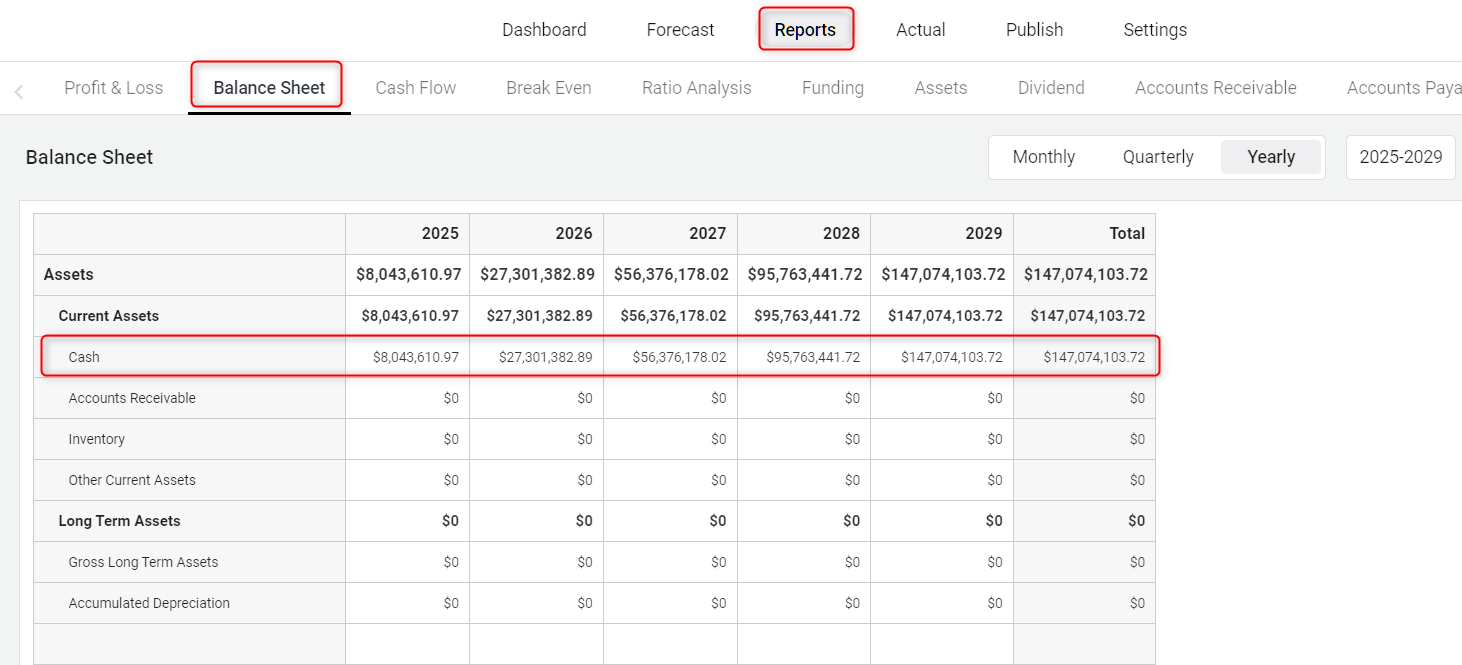Entering recurring charges (subscription) revenue streams
In this article
Subscription or Recurring charges revenue streams are very useful for forecasting products or services that involve signups, recurring billings, cancellation rates, and the like. Some good examples are magazine subscriptions, gym memberships, or software-as-a-service products. If your business is building a subscription service, creating a reliable sales forecast is a critical step to understanding how your business will grow, and what the key drivers of revenue growth will be.
Adding a Recurring Charges Revenue Stream:
- 1
-
In your Finance Forecasting Module, navigate to the Revenue tab and click on the Add Revenue Group option:

- 2
-
A pop-up will appear. Enter the Revenue Stream group title, then click on S ave & Next.
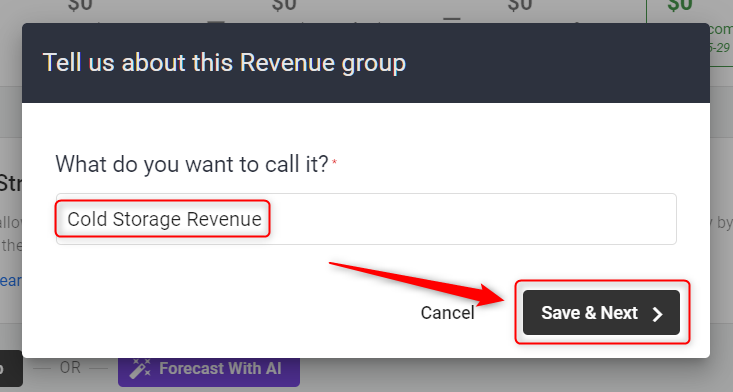
- 3
-
After saving the group, click on the Add Revenue Item button to begin entering individual revenue sources within that group.
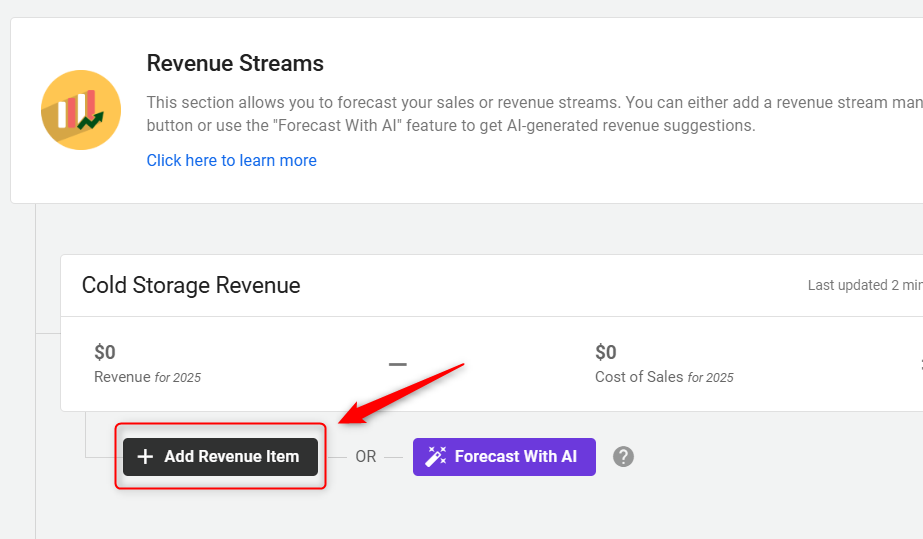
- 4
-
There are 5 ways to forecast revenue streams. You'll choose the type of Recurring Charges when you set up a revenue stream by clicking the appropriate radio option.
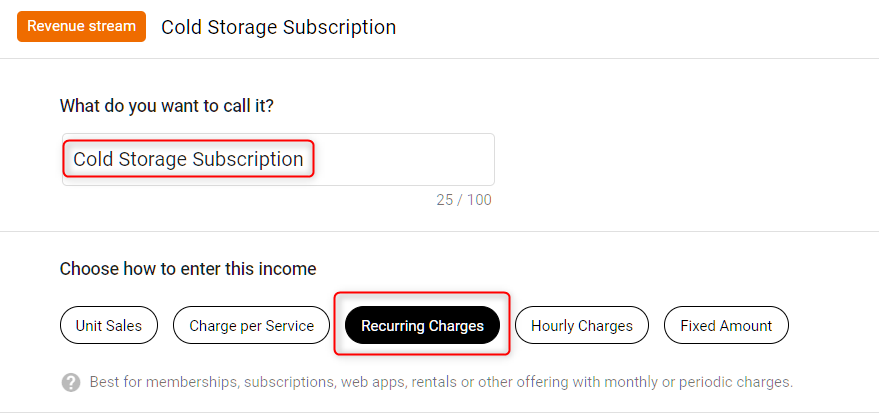
- 5
-
Customers: Enter the number of customers of this service you think. This can be either a constant amount per month or varying amounts.
If you think you will have the same number of signups per month, choose the Constant amount and enter the number per month:

Churn rate: Churn is the percentage of customers that cancel your service in a given month- When they leave, they’ve “churned out” and are no longer subscribing. For your business to grow, you need to add customers at a faster pace than they are canceling their subscriptions. If you're not sure how to estimate your churn rate, start with the number of customers you expect to cancel in a given month and divide that by the total number of customers that you forecast at the beginning of that month.
TIP: If the renewal period you specified is monthly, then the churn rate applies to monthly renewals. Also, the churn rate is applied to the number of customers you have at the beginning of each month - before any new signups are added. Subscribers are not charged for the period in which they've canceled.

If you expect different numbers of customers to sign up depending on the month (for example, if your business has seasonal highs and lows), choose Varying amounts over time. This will give you a grid so you can enter varying amounts:

- 6
-
Price: There are two different prices applicable for the subscription revenue model, One-time Setup fee (i.e.up-front fees) and Recurring price.
If you charge a setup fee (or other one-time charges) when customers sign up, enter that amount. If there is no initial charge, enter 0 and move on:
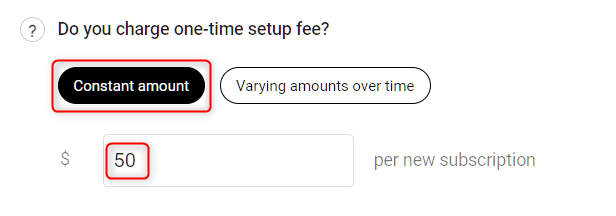
Next, enter the amount you will charge for each period of the subscription - this is your renewal charge. This can be a constant price or one that varies over time (for example, if your subscription price varies seasonally):


Finally, indicate how often you will charge your customers. This is your renewal period (for example, are your customers charged monthly, quarterly, every six months, etc.):

Enter the sales tax rate applied. The system will calculate your taxes and add them to the forecast automatically.
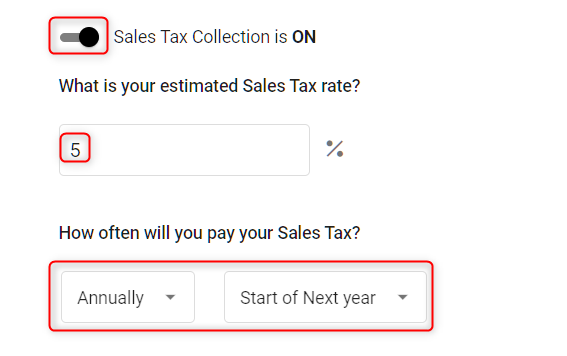
- 7
-
Refund: Unexpected refund risks are involved with your subscription service business when you decide to provide refunds to your customers on request. Let's enter how much refund rate do you estimate over revenue regenerated by Revenue Stream.

- 8
-
Start and End Date: Indicate when the revenue for this service charge sales stream will begin and finish. Click on Save.
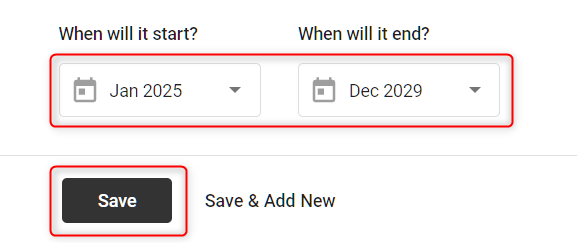
Where does this entry appear in the financial statements?
Your revenue streams will be used to calculate the highlighted lines in the Profit & Loss and Balance Sheet:

